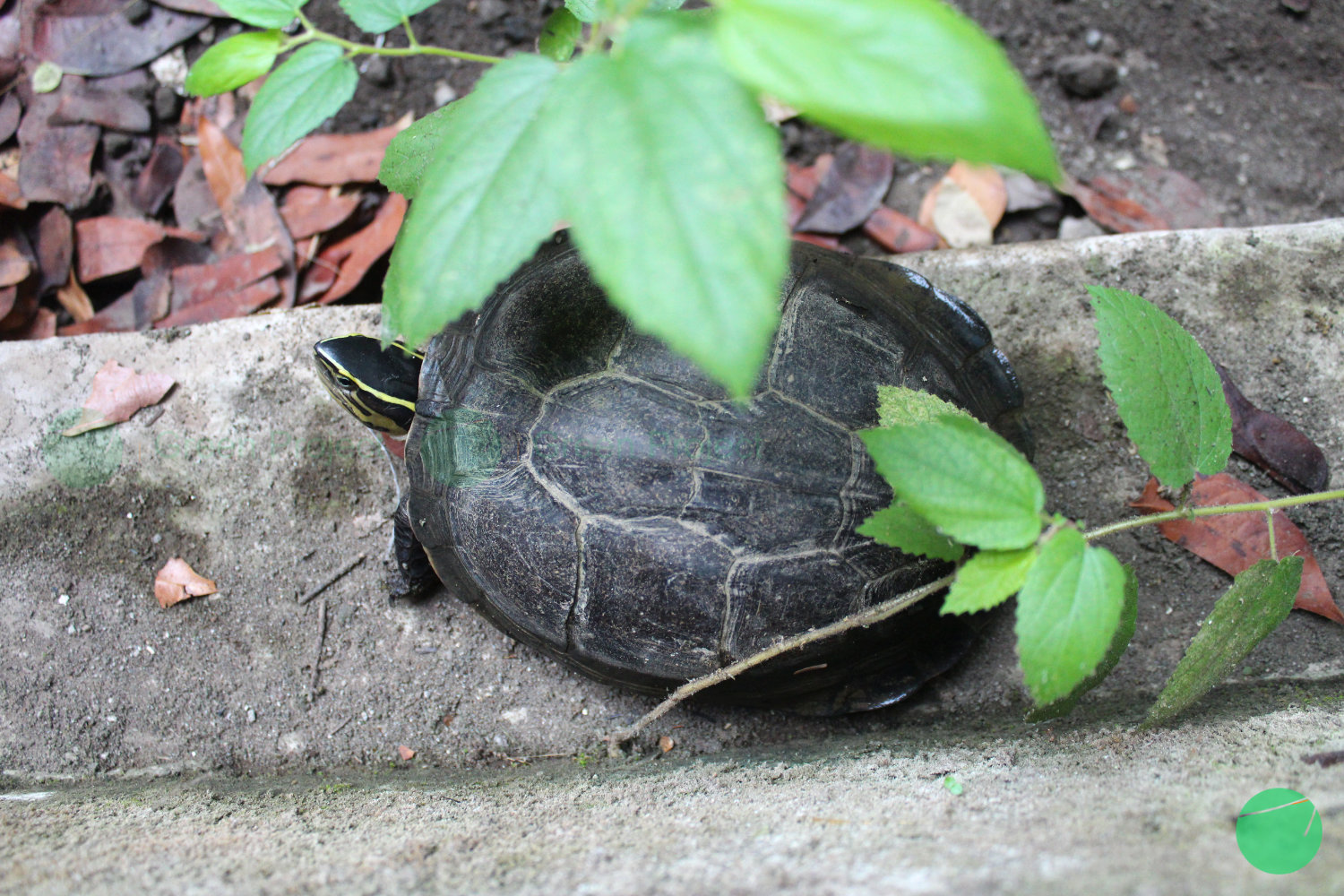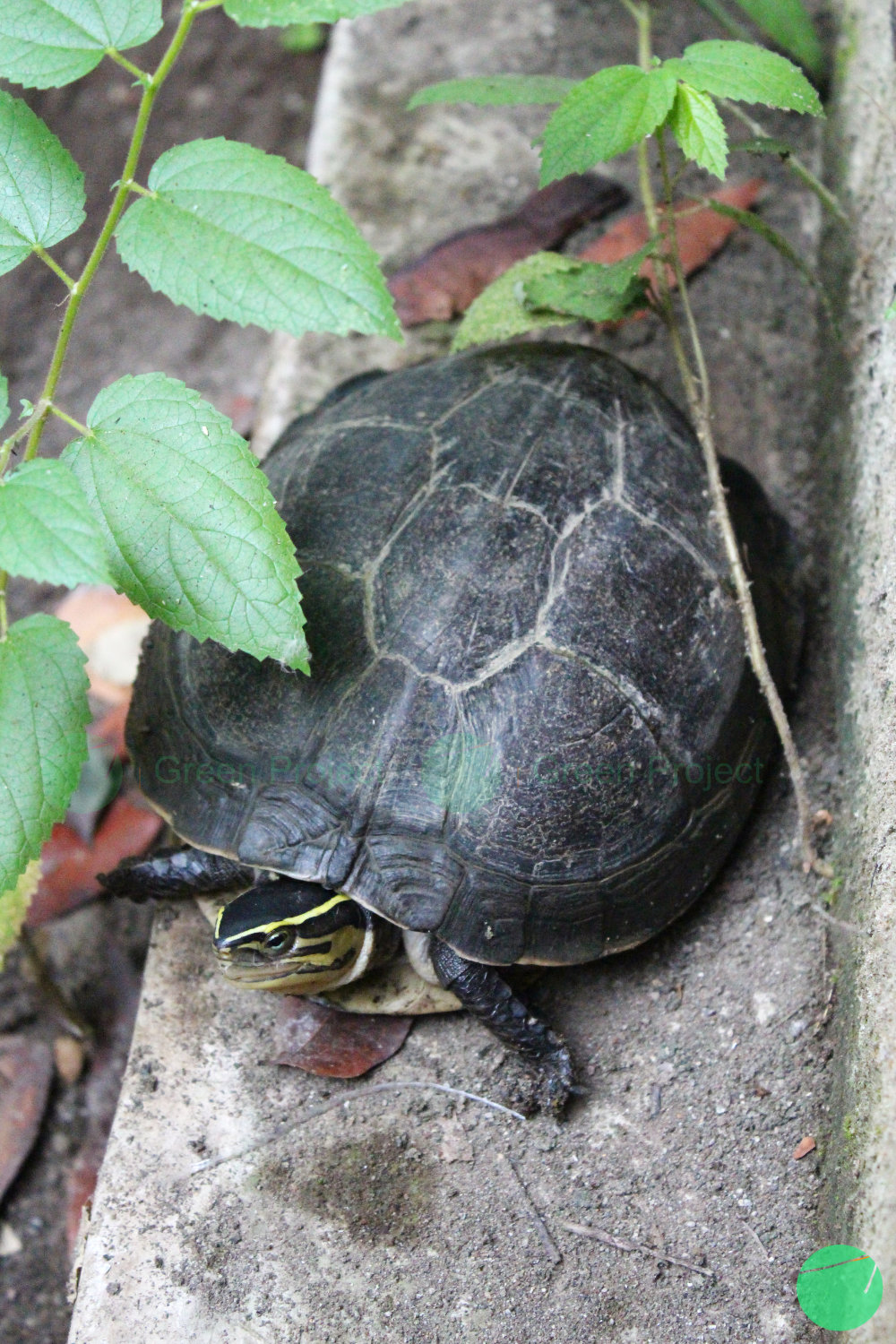Naming Identity
Kuya batok or Ambon turtle is scientifically called Cuora amboinensis in Latin. Internationally, in English, this animal is known as Amboina box turtle or Southeast Asian box turtle.
Taxonomy
Kingdom | Animalia |
Phylum | Chordata |
Class | Reptilia |
Order | Testudines |
Family | Geoemydidae |
Genus | Cuora |
Species | Cuora amboinensis |
Sub Species | Cuora amboinensis amboinensis (Wallacean box turtle) Cuora amboinensis couro (West Indonesian box turtle) Cuora amboinensis kamaroma (Malayan box turtle or domed Malayan box turtle) Cuora amboinensis lineata (Burmese box turtle) |
Origin and Distribution
Kuya batok or Amboina box turtle is a reptile that is widely distributed in Southeast Asian countries. Furthermore, Amboina box turtle has also spread to other countries in Asia such as northern India, Bangladesh, Burma, Thailand, Laos. Cambodia, Vietnam and the Philippines.

Characteristics
Amboina box turtle is an omnivorous reptile that tends to be vegetarian. When on land it prefers to eat plants, fruit, seeds, fungi, and worms. When in water it chooses to eat insects and snails. Young Amboina box turtle consume more meat while adult kuya shellfish consume foods that tend to be herbivorous.
Characteristics Based on Taxonomy
There are four subspecies distinguished by differences in color and shape of the carapace (carapace, upper turtle shell):
Cuora amboinensis amboinensis (Wallacean box turtle) – eastern Indonesian archipelago: Ambon Island, Sulawesi, Maluku, Buru, Seram, and East Timor, as well as other small islands in the region.
Has a fairly flat shell with widening edge scales. The plastron (plastron, the lower part of the turtle shell including the ventral and stomach) has larger black spots and the head also appears larger. This subspecies of kuya batok is well adapted to an aquatic lifestyle.
Cuora amboinensis couro (West Indonesian box turtle) – southern islands of Indonesia: Sumatra, Java, Bali and Sumbawa.
The carapace is slightly domed, some individuals have widened marginal scales. The plastron shows black markings on each plastral scale. The color is darker, the black spots are more oval on the shell.
Cuora amboinensis Kamaroma (Malay box turtle or Malayan domed box turtle) - Mainland Indochina (South and Central Vietnam, southern Laos and Cambodia), Thailand (Phang Nga Province, etc.), Singapore and Malaysia and Kalimantan.
The carapace is highly domed with a smaller, elongated shell with fewer black spots and has a smaller and shorter tail compared to other subspecies and lacks flared marginal scales.
Cuora amboinensis lineata (Burmese box turtle) – Myanmar.
Its shape resembles Cuora amboinensis Kamaroma, but on the carapace there is a brightly colored dorsal midline, and sometimes a brightly colored lateral line. The shell scales have large black spots similar to Cuora amboinensis couro.

Habitats
Amboina box turtle prefers lowland freshwater habitats and can be found in both natural and human-modified landscapes. This animal prefers calm or slow-flowing waters with soft bottoms such as ponds, rivers, swamps, rice fields, irrigation canals, and drainage channels. Kuya batok are also said to tend to be semi-aquatic and prefer to spend more time on land at night, but young kuya batok are more aquatic than older ones.
Conservation Status
Although Cuora amboinensis or Amboina box turtle is classified as vulnerable by the IUCN, they are able to thrive in several regions of the world. For example, they can be found in stormwater drains in Brunei where the area is highly polluted(GibbonWoot Partnership Limited, n.d.).
In Indonesia this species is also considered vulnerable, but it can also be said to be common and widespread in the west and abundant in most areas of the country with natural or man-made wetlands. A large number of the Amboina box turtle species are also said to be caught for use as local consumption, as a pet commodity exported to Europe and North America and as an export commodity for food and traditional Chinese medicine (Schoppe & Das, 2011).